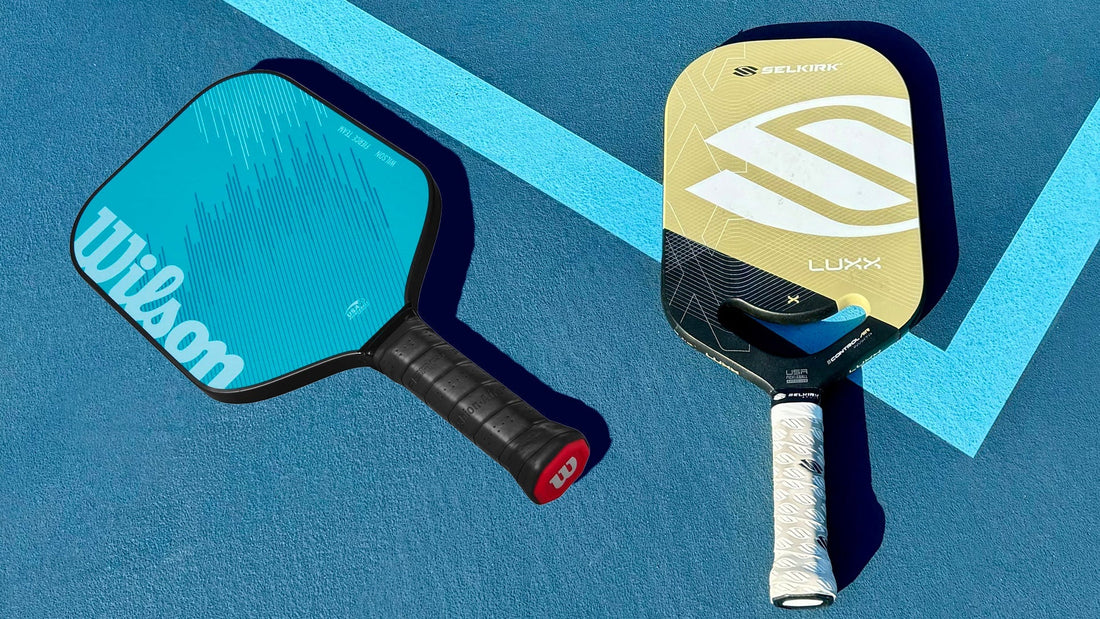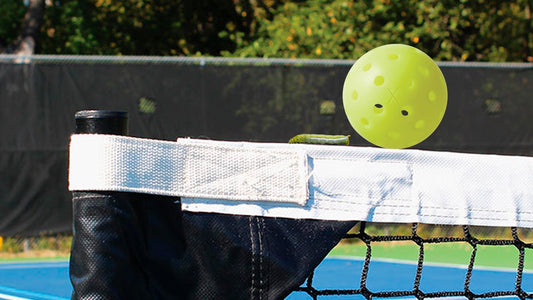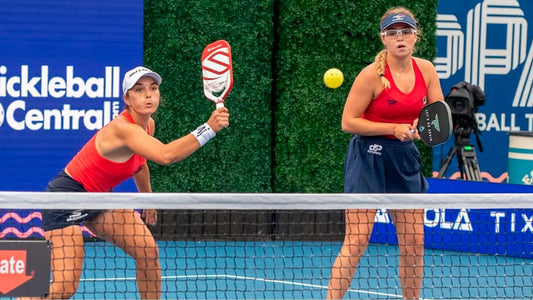
Edged vs. Edgeless Pickleball Paddles: Which is Best?
Share
“The right tool makes all the difference.” – Unknown
When it comes to pickleball paddles, choosing the right one can significantly impact your game. One of the most noticeable differences between paddles is whether they have an edge guard or are edgeless. Each option has its advantages and disadvantages, and understanding them will help you select the paddle that best suits your style of play.
What Are Edged Paddles?
Edged paddles feature a protective rim or guard around the paddle's edge. This edge guard is typically made of a durable material, such as plastic or composite, and is designed to protect the paddle from damage when it comes into contact with the court, ground, or other objects.
Advantages of Edged Paddles:
- Durability: The edge guard helps prevent chips, cracks, and other damage, extending the paddle's lifespan.
- Cost-Effectiveness: The added protection can save you money over time by reducing the need for frequent replacements.
- Stability: The edge guard often adds weight, providing a more stable feel during play.
Disadvantages of Edged Paddles:
- Reduced Sweet Spot: The edge guard can slightly reduce the size of the sweet spot, which is the optimal hitting area on the paddle.
- Interference: The edge guard can occasionally interfere with shots, especially when hitting close to the edge.
What Are Edgeless Paddles?
Edgeless paddles, as the name suggests, do not have an edge guard. Instead, they feature a smooth design that extends to the very edge of the paddle. These paddles often prioritize performance and aesthetics over durability.
Advantages of Edgeless Paddles:
- Larger Sweet Spot: Without an edge guard, the paddle provides a larger and more consistent hitting area, ideal for precision and control.
- Enhanced Aerodynamics: The lack of an edge guard reduces drag, allowing for quicker swings and improved maneuverability.
- Aesthetics: Edgeless paddles often have a sleeker, more modern design that appeals to many players.
Disadvantages of Edgeless Paddles:
- Less Durable: Without the edge guard, the paddle is more susceptible to chips and cracks, especially if it frequently hits the ground.
- Higher Maintenance Costs: The lack of protective features may result in the need for more frequent replacements.
- Potential Fragility: Some edgeless paddles are not as sturdy, making them less suitable for aggressive players.
Choosing the Right Paddle for You
When deciding between edged and edgeless paddles, consider the following factors:
1. Your Play Style
- If you’re an aggressive player who frequently scrapes or hits the ground during shots, an edged paddle may be the better choice for its durability.
- If you prioritize finesse and control, an edgeless paddle can enhance your precision and consistency.
2. Skill Level
- Beginners often benefit from edged paddles, as they are more forgiving and durable.
- Intermediate and advanced players may prefer edgeless paddles for their enhanced performance and larger sweet spots.
3. Budget
- If you’re looking for a cost-effective option that will last, edged paddles are generally more durable.
- If you’re willing to invest in performance and are less concerned about wear and tear, edgeless paddles may be worth the extra cost.
4. Frequency of Play
- Players who compete frequently or play on rough surfaces might lean toward edged paddles for their durability.
- Recreational players on smooth courts might prefer edgeless paddles for their ease of use and superior feel.
Game Point
Both edged and edgeless paddles have their place on the pickleball court, and the right choice ultimately depends on your preferences and needs. Edged paddles offer durability and protection, making them a practical choice for many players. Meanwhile, edgeless paddles cater to those who prioritize precision, performance, and aesthetics.
No matter which paddle you choose, the most important thing is to find one that feels comfortable in your hand and complements your style of play. Test out both options if possible, and see which paddle helps you play your best game!
See you on the courts!



